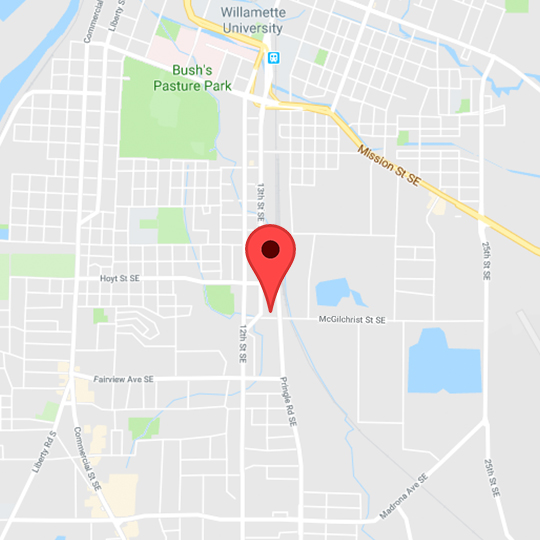Thrush is a remarkably common, harmless, yet frustrating condition which many of us have had to contend with in our newborns and infants.
I still shudder when I recall, as new parents, how long it took for us to eliminate those nasty little white patches from our daughter Emily’s mouth. The basis for our repeated failures was a lack of understanding of the characteristics of the yeast that causes thrush, and the myriad ways by which it can be spread.
So what exactly is thrush?
It’s a surface infection of the mucous lining of the mouth, potentially including the tongue and the lips, caused by the yeast Candida Albicans. And where does Candida Albicans come from? It turns out that all humans have Candida Albicans as a normal flora, or inhabitant of our GI tracts, and we ALL shed it in our stool. It causes vaginal yeast infections in women, jock itch in men, and diaper rashes in babies.
But how does it end up in a baby’s mouth?
Good question! Turns out that young infants end up nearly covered in Candida Albicans. With the skin-to-skin contact that we encourage nursing moms to use with their babies, the yeast inevitably ends up on mother’s breast, and in short order, in the baby’s mouth. Even bottle fed babies are susceptible, because the yeast from the baby’s bottom soon covers the baby, and then other objects like pacifiers, which end up in his mouth.
When someone tells me over the phone they think that their little Jacqueline has thrush, I first want to know whether mom’s nipples are sore (they usually, but not always, are) and second, whether Jacqueline acts like her mouth hurts when she latches on to nurse.
What one sees initially are scattered tiny white patches, often first at the corner of the mouth, or on the tongue, then eventually spreading to the buccal (inside of cheeks) mucous lining, and tongue. Although it can be on the tongue, I have a very strong conviction that it shouldn’t ONLY be on the tongue. Another condition that can mimic thrush is hairy tongue. The white patches on the tongue are actually breast milk — the baby isn’t sucking effectively enough to transfer the milk to the food-tube, so it accumulates on the tongue. Unlike babies with thrush, however, it shouldn’t cause any pain for either the infant or mom.
So how do we get rid of thrush?
A mainstay for treating infant thrush has been Nystatin suspension. It is typically applied to the baby’s mouth four times a day. The problem is, yeast bud divides about every 90 minutes. Thus, the Nystatin can’t possibly keep up with the yeast’s rate of division, so in my experience, it’s not very effective. Further, it’s a prescription, so most physicians will require an office visit to prescribe it. Finally, mother’s nipples and areola need to be simultaneously treated with an anti-fungal cream, my favorite being clotrimazole 1% cream, sold at most pharmacies as “Athlete’s Foot Cream.”
1% Gentian Violet is, I believe, far more effective. It’s applied just twice a day to all the affected surfaces of the mouth and lips, and binds irreversibly to those tissues. Thus, it’s always there as the yeast continues to divide. It should be applied sparingly, however, 4-5 drops on a Q-tip is probably plenty. If you put too much in your son’s mouth, he’s likely to drool purple all day. The Gentian Violet is a permanent dye, so it won’t come out of clothing.
In fact, I recommend that parents strip their child down to just a diaper, and put her on an old towel for 10-15 minutes after they apply the Gentian Violet, so they don’t ruin her clothing. Though the indelible dye will to some extent “treat” mom’s nipples, I recommend she again use the Athlete’s Foot Cream mentioned above.
Nursing babies present a particular challenge in treating thrush
Given the crevices in the human nipple, it is virtually impossible to completely rid the breast of yeast infections using topical products such as the clotrimazole. As soon as the baby’s mouth starts to clear, it is re-exposed to more yeast from the breast. More often than not, topical combinations discussed above, clotrimazole for mom, plus Nystatin or Gentian Violet for baby, will not completely eliminate the yeast. Inevitably, increasingly frustrated mothers undertake multiple rounds of treatment.
Fluconazole, brand name Diflucan, is the final option and often best option for nursing babies. As this involves a form of treatment that both mother and baby will take orally — I insist on seeing the baby to confirm the diagnosis first. Baby is given a double dose once the first day, then a single dose daily for another 13 days, to complete a 2-week course. I direct mothers to call their obstetrical provider to request 2 100-mg Fluconazole tablets (the same dose used for vaginal yeast). I suggest mom take one at the start of the baby’s treatment, and a second tablet at the start of baby’s second week of treatment.
Last thoughts
Yeast can last for many hours on virtually any object it touches, like: bottle nipples, teething rings, pacifiers, and so forth. Therefore, it is extremely important that all such objects be boiled daily — usually after Arthur goes to bed. This was the single detail I was clueless about when Emily developed thrush, and so it took months to finally clear her mouth!


 and then tap "Add to homescreen".
and then tap "Add to homescreen". Salem Pediatric Clinic
Salem Pediatric Clinic
